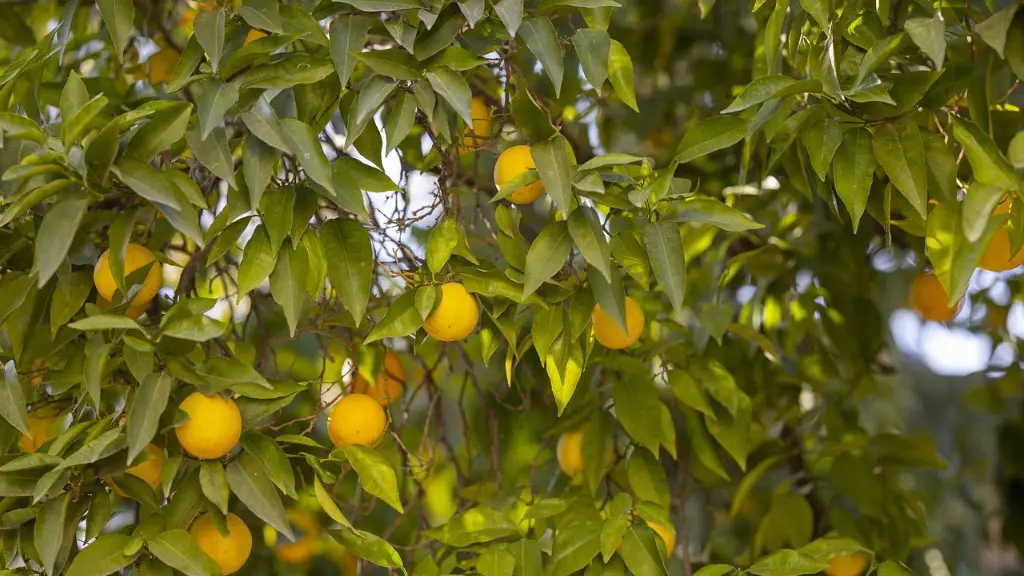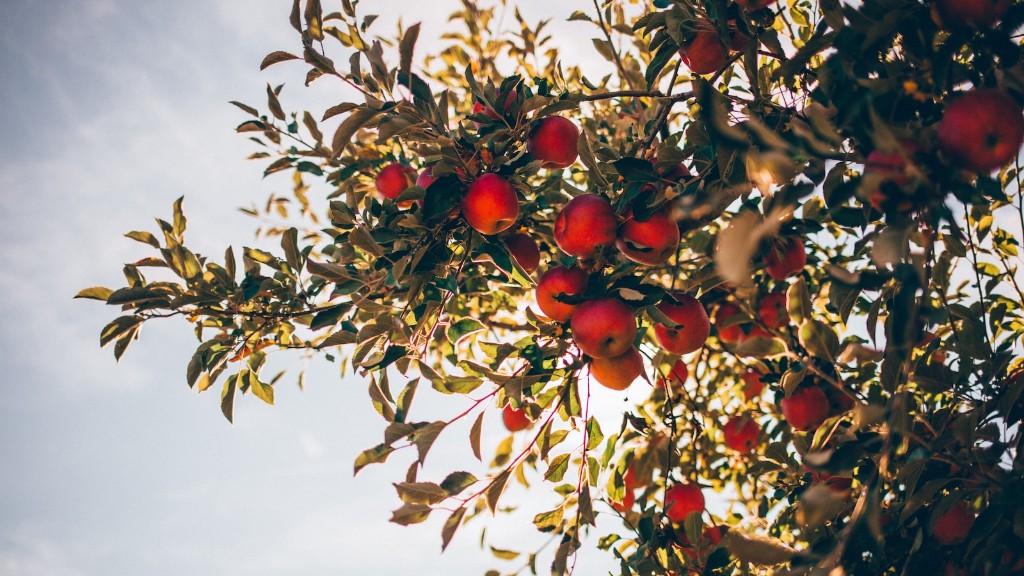Lemon trees are a popular choice for many homeowners because of their relatively easy care and bountiful fruit production. However, sometimes lemon trees can experience problems, such as leaves falling off. This can be caused by a number of things, such as pests, disease, or even too much or too little water. If you’re wondering why your lemon tree leaves are falling off, read on for some possible explanations.
There could be several reasons why the lemon tree leaves are falling off. It could be a sign of a nutrient deficiency, disease, or simply age. If the leaves are falling off in large numbers, it is likely due to a problem with the tree. Check the roots to see if they are healthy and receiving enough water. Inspect the leaves for signs of pests or disease. If you can’t find any obvious problems, it is probably best to consult a professional tree service.
How do I stop my lemon tree losing leaves?
It is important to let the soil dry out slightly between waterings, as leaf drop can be caused by soggy soil and water that stagnates in the tray. Make sure to dump out the water after a good, long soak, and you’ll know it is time to water when the soil is dry a couple of inches down into the pot.
One needs to water a lemon tree every 3-7 days on average. However, this number may change over time due to various conditions such as plant size, temperature, and humidity.
What does Overwatered lemon tree look like
If you notice that your tree’s leaves are yellow or cupped, it could be a sign that you’re watering it too often. Citrus trees prefer infrequent, deep watering to frequent, shallow sprinklings. So try giving your tree water less often and see if that helps perk up its leaves.
There are many potential causes of abnormal leaf drop, so it is important to investigate the specific issue in order to determine the best course of action. Some possible causes include exposure to extreme changes in temperature, lack of or excess water, lack of nutrients or nutrients imbalance, wind, root disease, pests including insects and rodents, systematic diseases, or even damage from spraying. Once the specific cause has been determined, it will be easier to take steps to address the issue and prevent further leaf drop.
Can lemon tree come back after losing leaves?
When a tree’s leaves drop due to high heat or water stress, the tree will usually start to grow new leaves within a couple of weeks, provided that conditions return to normal. Citrus trees are heavy feeders, so if you’re not fertilizing the tree enough, that could be the problem.
Don’t panic if your citrus tree loses its leaves! This is a natural reaction to stressors like changes in temperature, light, or water. The tree is simply trying to conserve energy and protect itself. inspect the tree for other signs of distress, like wilting branches or yellowing leaves, and take steps to address the underlying issue. With proper care, your citrus tree will soon be back to its healthy self.
How do I know if my lemon tree is getting enough water?
If you want to check if your tree needs watering, try putting your finger to the depth of 3 to 6 inches from the surface of the soil. If the area is dry, then that’s the time you need to water it. If it is still moist, then wait for a few more days before watering the tree.
Overwatering trees can lead to a number of problems including:
-The area around the tree is constantly wet
-New growth withers before it’s fully grown or becomes light green or yellow
-Leaves appear green but are fragile and break easily
If you think your tree may be overwatered, look for these signs and take steps to reduce the amount of water it is receiving.
Do lemon trees need full sun
Lemon trees are one of the most popular fruit trees to grow in home gardens. They are relatively easy to care for and produce a bountiful crop of delicious fruit. Though they will grow in a range of soils, lemon trees prefer well-drained, slightly acidic soil. They also require full sunlight for adequate growth. When planting, lemon trees should be set slightly higher than ground level to ensure good drainage. With proper care, your lemon tree will provide you with an abundance of fresh lemons for years to come.
Lemon trees are susceptible to a number of problems, including lesions on leaves, black moldy spots, fuzzy gray mold, brown scabs, and tan spots with dark outlines. Some of these problems can be tackled by using the appropriate fungicides and bactericides, while others may require more serious treatment, such as pruning and removing infected leaves.
How do you care for a potted lemon tree?
To recreate nature in your own home, start by watering your plants really well and letting them drain properly. Then, let them dry completely before moving on to the next step.
If some roots have rotted, keep the plant in a cool position, watering with care, in the hope that the plant may be able to make new root growth and recover. If in doubt as to the reason for a decline in growth and appearance, remove the plant from its pot and check the root condition.
How do I know if my citrus tree is dying
The bark on many trees contains a green, damp layer just beneath the surface. This layer is full of nutrients and moisture that are essential for the tree’s health. When this layer is exposed, it is important to take care not to damage it.
Citrus trees need a lower room temperature in winter to go semi-dormant and do best. Consider a room temperature of 58-68 degrees. Also, rotate the plant regularly, fertilize monthly, improve air circulation, and water properly. Lastly, watch for pests.
Why are the leaves on my indoor lemon tree turning yellow and falling off?
Lemon trees are heavy feeders and require regular applications of a complete fertilizer to stay healthy and produce abundant fruit. If your tree is showing signs of nutritional deficiency, such as yellowing leaves or mottled leaf veins, you can apply a fertilizer that contains micronutrients such as zinc, iron, or manganese.
Over watering your lemon tree can lead to root rot, which can be deadly. Root rot is caused by a fungus that thrives in wet soil. If you think your tree might have root rot, take immediate action to save it.
How do I know if my lemon tree has root rot
Symptoms of root damage include reduced vigor, dull green leaf color, poor new growth, and twig dieback. If extensive root damage occurs, the leaves suddenly wilt and dry on the tree. The disease usually starts in larger roots and spreads into the crown.
Lemon trees in containers are more vulnerable to the cold and drought. While a lemon tree in the ground can take mild frost and cold, a lemon tree in a container cannot. A lemon tree in a container has a hardiness zone that is one zone higher than the USDA recommended zone.
Conclusion
If your lemon tree is experiencing leaf loss, it could be due to a number of reasons, including pests, disease, or wrong watering habits. To determine the exact cause, it’s best to consult with a local gardening expert.
There are a number of reasons why lemon tree leaves might fall off, including pests or diseases, lack of water, or too much fertilizer. If you suspect your tree is not healthy, you should consult with a professional tree care specialist to diagnose the problem and recommend a solution.



